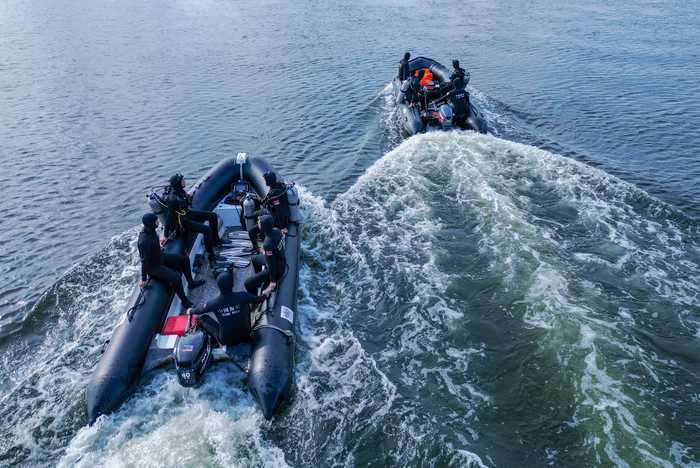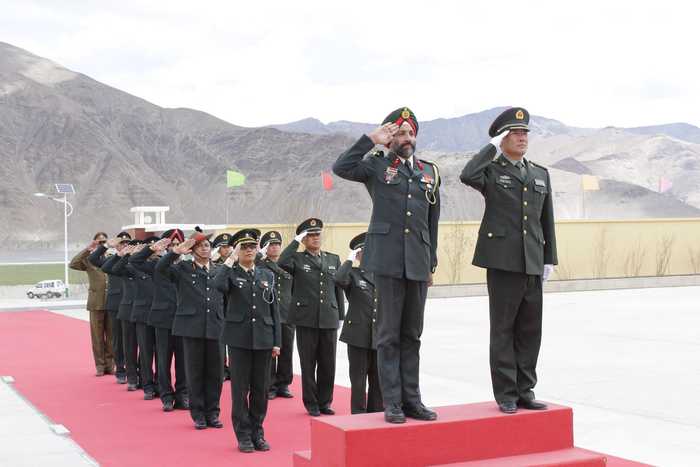Published 17:58 IST, July 4th 2024
PLA Readies for Extended Conflict with India as Global Crises Intensify
The US Intelligence Community's Annual Threat Assessment highlights the ongoing strain in Sino-Indian relations.
- Defence
- 5 min read
Ladakh: Despite the world's focus on Ukraine, Gaza, and the South China Sea, the People's Liberation Army (PLA) continues to fortify its position along China's southern border with India. The Annual Threat Assessment of the US Intelligence Community acknowledges the persistent strain in Sino-Indian relations due to their disputed border, albeit briefly amidst global conflicts. The report noted that significant cross-border clashes have not occurred since 2020, but large troop deployments on both sides remain. The potential for sporadic encounters raises the risk of miscalculation and escalation into armed conflict. In April 2024, the Strategic Studies Institute of the US Army War College published an analysis of PLA activities in Aksai Chin during 2020-21, providing insight into the ongoing military standoff.
The PLA rapidly deployed troops to Aksai Chin following the Galwan Valley clash in June 2020. Dennis Blasko, a former US defence attache, assessed that the PLA is prepared to maintain its deployments near the Line of Actual Control (LAC) indefinitely. This strategy serves both political and military purposes, offering real-world operational experience that routine peacetime training cannot match. However, the PLA faces sustaining its forces in the remote, high-altitude region. Supply depots are located more than 1,600 km away, requiring complex and prolonged logistical efforts. The Western Theater Command, responsible for nearly half of China's landmass, oversees these operations with a fraction of the PLA's total ground forces.
Strategic Significance of PLA's Border Operations
The PLA's fortified positions along the LAC support a significant deployment, estimated at 20,000 troops across a 400 km front. This force includes additional engineers, artillery, and support elements. Despite the substantial presence, Blasko argues that the terrain's rugged nature and logistical constraints limit the PLA's ability to conduct large-scale offensive operations.
The PLA's border operations serve as a deterrent, creating "facts on the ground" and reinforcing China's territorial claims. Similar to its activities in the South China Sea, these operations are designed to consolidate control and maintain a long-term presence. The PLA's construction of infrastructure, such as bridges over Lake Pangong, underscores its commitment to enhancing mobility and readiness along the border.
Parallel Tensions in the South China Sea
The South China Sea remains a flashpoint, exemplified by the recent confrontation between the China Coast Guard (CCG) and the Philippines near Second Thomas Shoal. This incident, which saw the CCG seizing a Philippine boat and injuring a sailor, highlights China's aggressive tactics. President Ferdinand Marcos Jr. warned that the Philippine-US Mutual Defense Treaty could be invoked if such provocations lead to casualties.

China's assertive actions in both the South China Sea and along the Sino-Indian border reflect a broader strategy of territorial consolidation. The PLA's activities in Aksai Chin mirror its island-building campaigns, demonstrating a willingness to escalate tensions to secure strategic advantages.
Implications for Sino-Indian Relations
Blasko's analysis suggests that while the PLA is not positioned for a large-scale offensive, the risk of localized skirmishes remains high. The PLA's presence serves as a constant reminder of the unresolved border dispute, complicating diplomatic efforts. Both India and China must navigate this precarious situation, balancing military readiness with the need for dialogue.
In conclusion, the PLA's fortified positions along the LAC represent a significant challenge for India's strategic planning. The ongoing military buildup, logistical complexities, and potential for conflict underscore the importance of sustained diplomatic engagement. As global attention remains divided, the Sino-Indian border will continue to be a critical focal point in regional security dynamics.

China has been feverishly working on new infrastructure, including two bridges over Lake Pangong. These bridges facilitate the movement of troops, equipment, and supplies, indicating a long-term commitment to maintaining and potentially escalating its presence. The construction of a road from the bridge to the Moldo garrison and PLA base camp behind Lake Spanggur further enhances their logistical capabilities.
Additionally, the PLA Tibet Military Command and the Department of Highland Military Medicine of the PLA Army Medical University have launched a pilot program for low-pressure hypoxia cabin acclimation training for recruits before deployment. This training has improved acclimatization, permitting operational deployments in shorter periods.
Sustainability Measures for High-Altitude Deployments
To sustain troops in high-altitude areas, the PLA has established "vegetable factories" at altitudes as high as 5,270m to provide fresh greens to border defence troops. These measures demonstrate the PLA's commitment to ensuring the well-being and operational efficiency of its forces in challenging environments.
Blasko's report highlighted the PLA's preparedness to maintain these operations indefinitely. Until a negotiated political settlement is reached, the Western Theater Command is prepared to sustain the rotation of units into and out of the region in the largest near-combat deployment since the end of the border conflict with Vietnam in 1987.
Blasko acknowledged the possibility of future border confrontations, especially as small units come into proximity with each other. The challenging terrain favours light infantry operations over large-scale mechanized combat. This environment complicates large-scale offensive operations, making defensive posturing and territorial consolidation more feasible for the PLA.
Updated 17:58 IST, July 4th 2024
